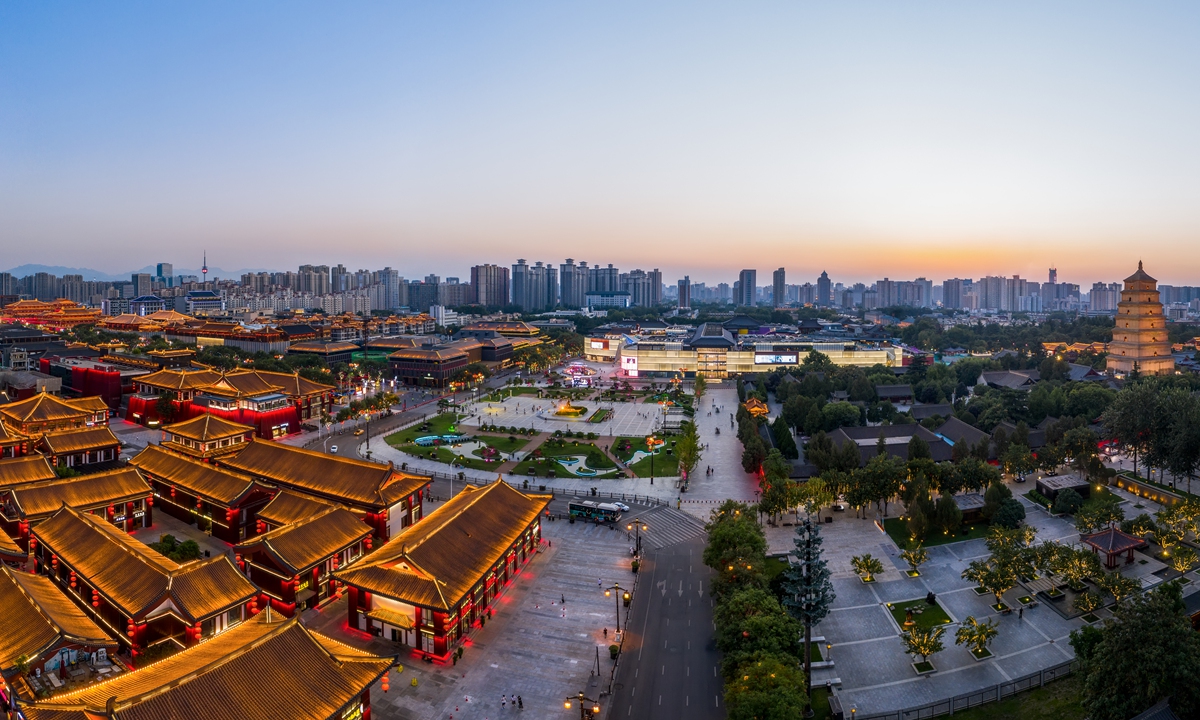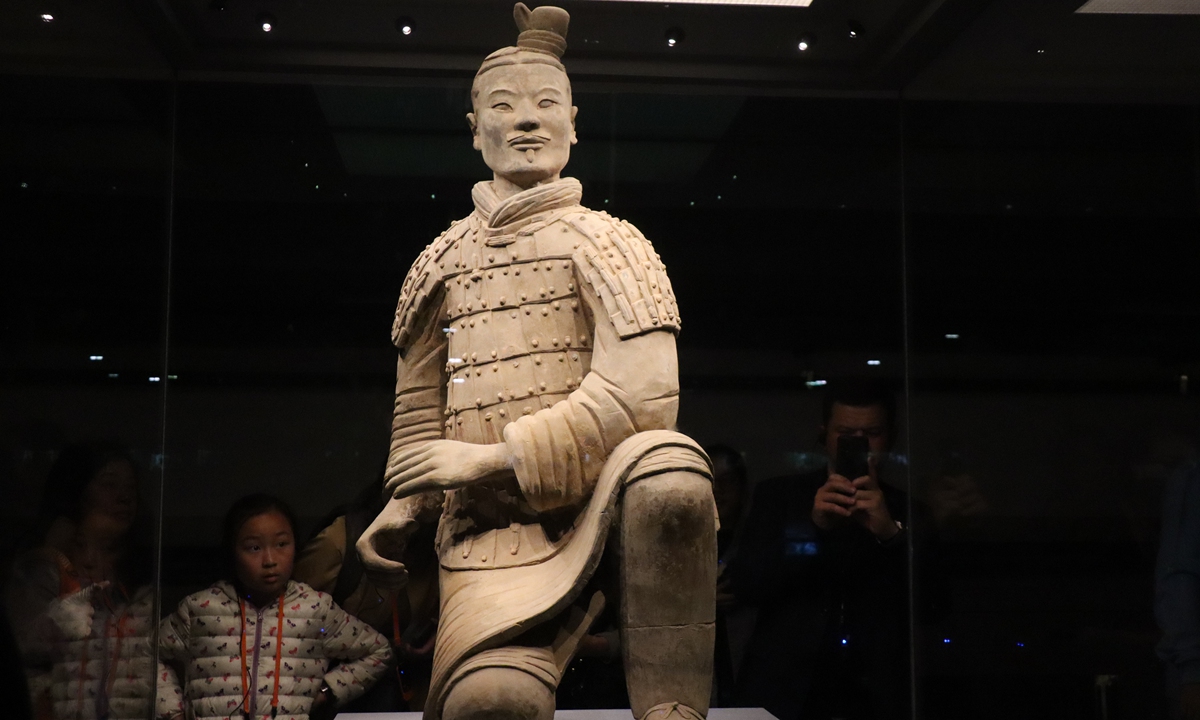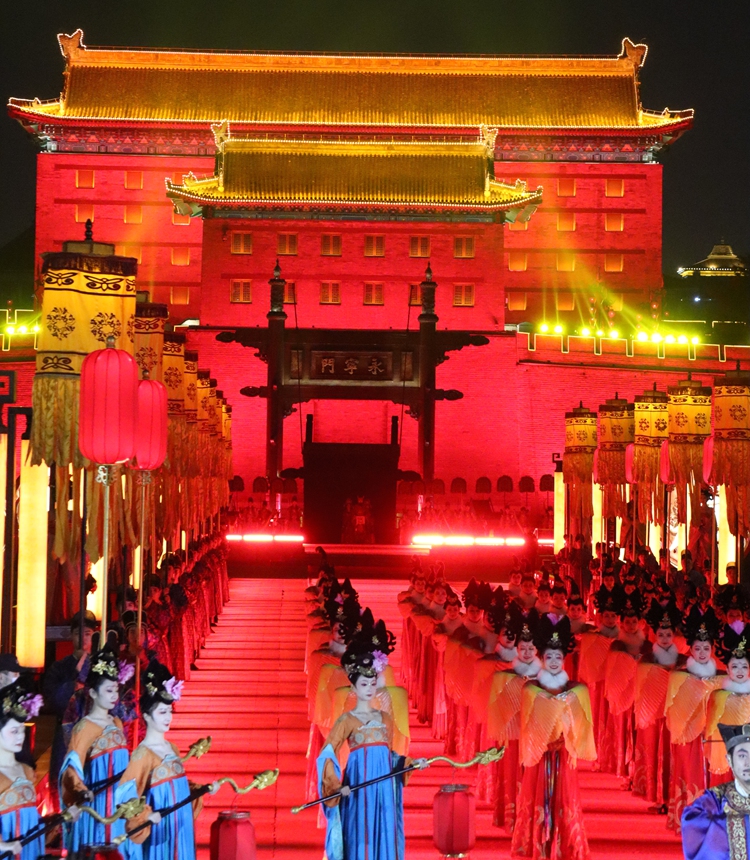
A general view of the Datang Everbright City in Xi'an Photo: VCG
The city of Xi'an, Northwest China's Shaanxi Province, once a key stop and starting point of the ancient Silk Road trade route, has recently hosted a monumental China-Central Asia Summit, which reached a declaration among China and Central Asian countries about cooperation in energy, education, science, healthcare and other areas.
But the city is not only a political and economic hub for international conferences and businesses, but also a cultural and historical treasure trove that attracts millions of tourists every year.
Xi'an had been the capital of China for more than a thousand years and during that era it witnessed the rise and fall of many dynasties and emperors.
The city is home to some of the most well-known tourist destinations in China, such as the Big Wild Goose Pagoda, a Buddhist temple built during the Tang Dynasty (618-907), the Terracotta Warriors, a collection of thousands of life-sized clay soldiers and horses buried with China's first emperor and the Muslim Quarter, a vibrant area where the Hui ethnic group live and sell their delicious food, including well-known Xi'an delicacies.

A terracotta warrior at?the Mausoleum of the First Qin Emperor in Xi'an Photo: Lou Kang/GT
Boosted by social media
The popularity of Xi'an as a tourist destination has recently been very much boosted by social media.
Thanks to its ancient city ruins dating back to the Tang Dynasty and its restored ancient roads, visiting tourists feel like traveling back in time.
One of the most popular places to experience Xi'an's antique culture is the Tang Dynasty Furong Garden, a replica of a royal garden that was originally built for Emperor Xuanzong's beloved concubine Yang Guifei.
The garden covers an area of 165 acres and consists of pavilions, bridges, ponds and rockeries.
It also hosts a spectacular show called The Song of Everlasting Sorrow, which tells the tragic love story of Yang Guifei and Emperor Xuanzong through music, dance and special effects.
Another renowned destination is the Datang Everbright City, a large-scale scenic complex that recreates a Tang Dynasty environment for visitors to enjoy.
The man-made scenic area features a variety of entertainment options such as museums, theaters, restaurants, shops and night markets.
Visitors can enjoy performances of traditional music and dance, taste authentic Tang-style dishes and snacks, buy souvenirs and handicrafts and even dress up in Tang-style costumes.
Among the performances provided to the public, the most popular show at the moment is a quiz game Shengtang Mihe, which can be literally translated to "a secret box from Tang Dynasty."
The game is an activity launched by the scenic spot. In each scene of the performance, two actors play the role of Fang Xuanling and Du Ruhui, two Tang Dynasty officials who have traveled to modern times.
Tourists are randomly selected to come on stage and answer questions from the hosts.
The winner will leave with a prize and the loser can take a photo with them before they are "cast off" from the stage.
The game and the two hosts quickly started trending online thanks to the influence of social media, where a single video of them can receive up to millions of likes.
Every day, more than an hour before the opening of the evening performance, a large audience gathers around the venue waiting for the show.
Many netizens have shared their photos and videos of visiting Xi'an on platforms such as Weibo, Douyin and Kuaishou, generating millions of views and likes.
Some influencers have even become ambassadors for Xi'an, promoting its attractions and products to their followers.

The Tang Dynasty Grand Welcoming Ceremony at the foot of the ancient city wall in Xi'an Photo: Lou Kang/GT
Time machine Xi'an is a place where you can enjoy both history and modernity thanks to its strategic position on the Silk Road and its role as an indispensable place in Belt and Road Initiative.
In the past several months, international conferences including the general assembly for the Alliance for Cultural Heritage in Asia and the China-Central Asia Summit took place here, with billboards on the street welcoming the state visits to Xi'an.
In the spring, the flowers in Daci'en Temple are in full bloom.
Many tourists and their families take pictures and play among the flowers.
Inside the temple stands the city's famous Giant Wild Goose Pagoda, a famous historical and cultural site in China built during the Tang Dynasty to store the Buddhist scriptures and relics brought back from India by the monk Xuanzang.
It is a symbol of the ancient Silk Road and the cultural exchange between China and India.
The pagoda is surrounded by a large temple complex, where visitors admire the architecture, sculptures, murals, and gardens of different dynasties.
In the suburbs, 40 kilometers away from the Big Wild Goose Pagoda, restoration work is still in progress in the crowded pit of the world-renowned Terracotta Warriors.
A local guide told the Global Times that the excavation of the Terracotta Warriors is still in progress and there are still many unsolved secrets about these clay sculptures waiting to be announced to the public in the future.
A city that combines ancient charm and modern vitality, Xi'an is a place where history and culture meet innovation and development.
It is a destination that offers something for everyone. Whether you are interested in politics, economics, religion, art or food, you will find your cup of tea in Xi'an.






